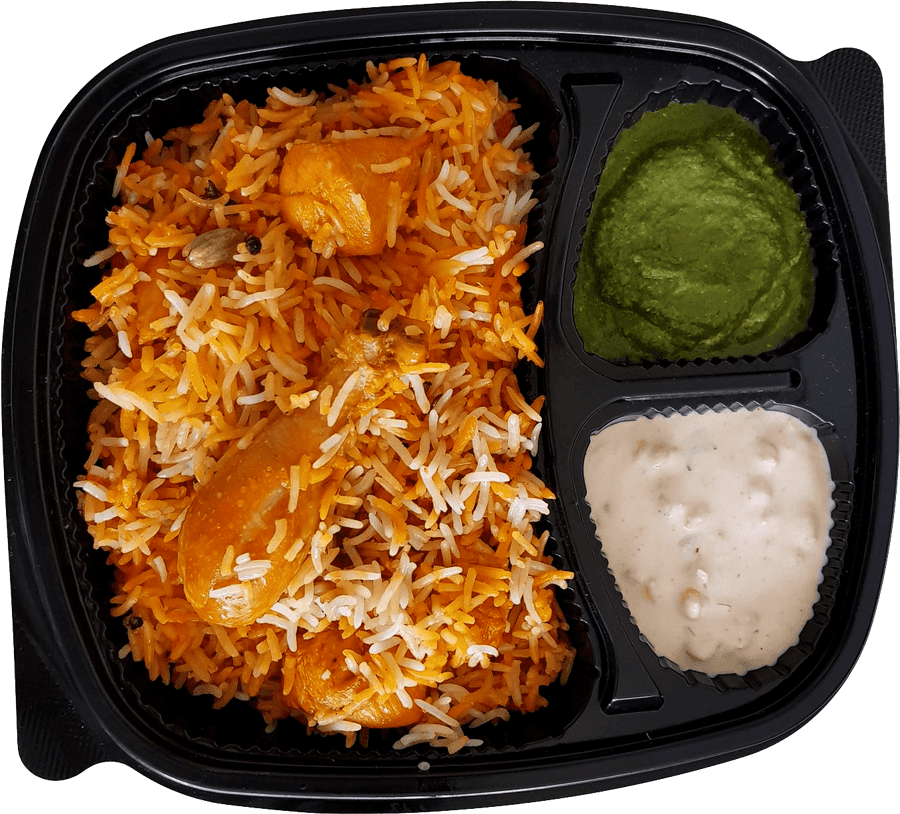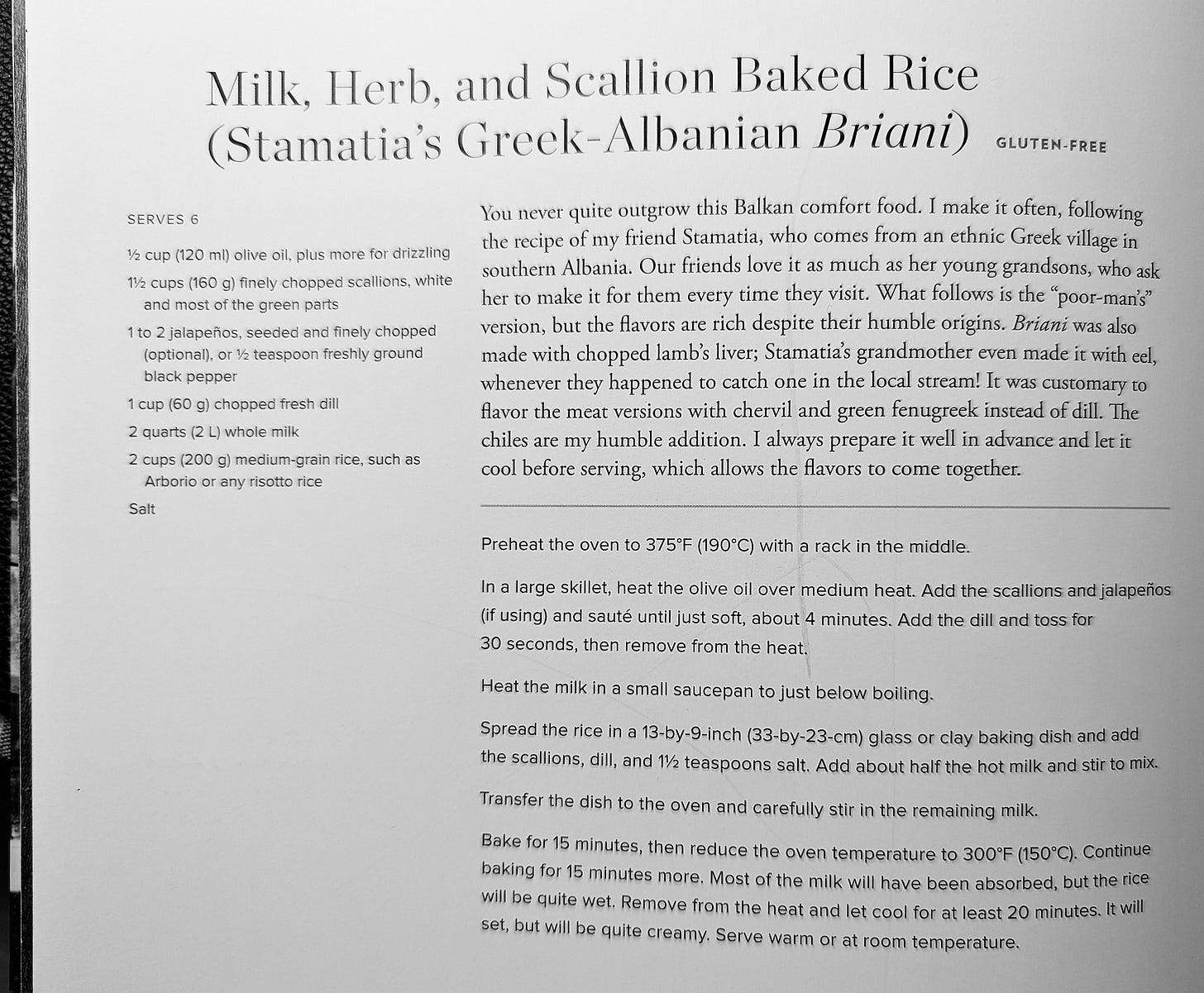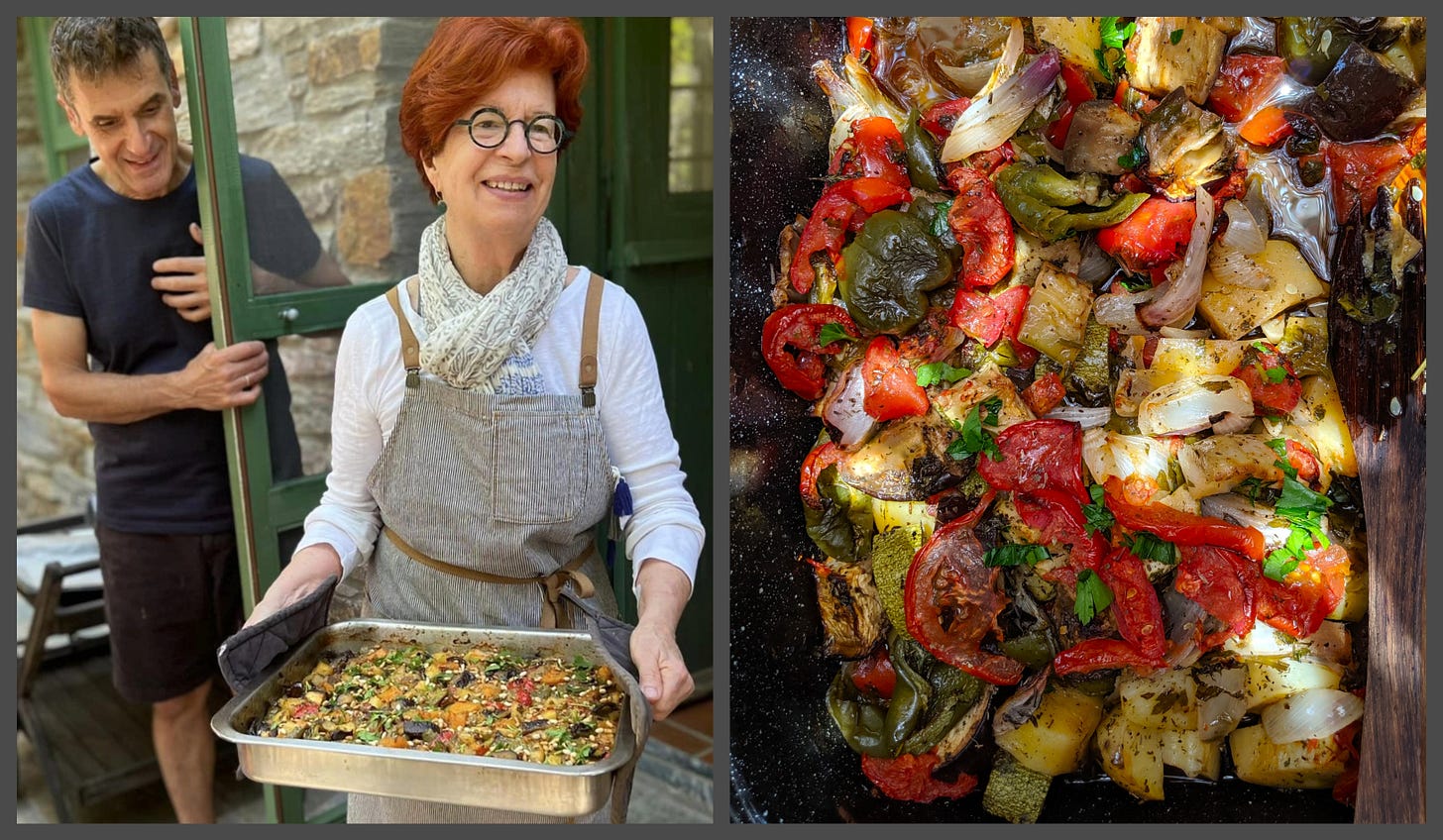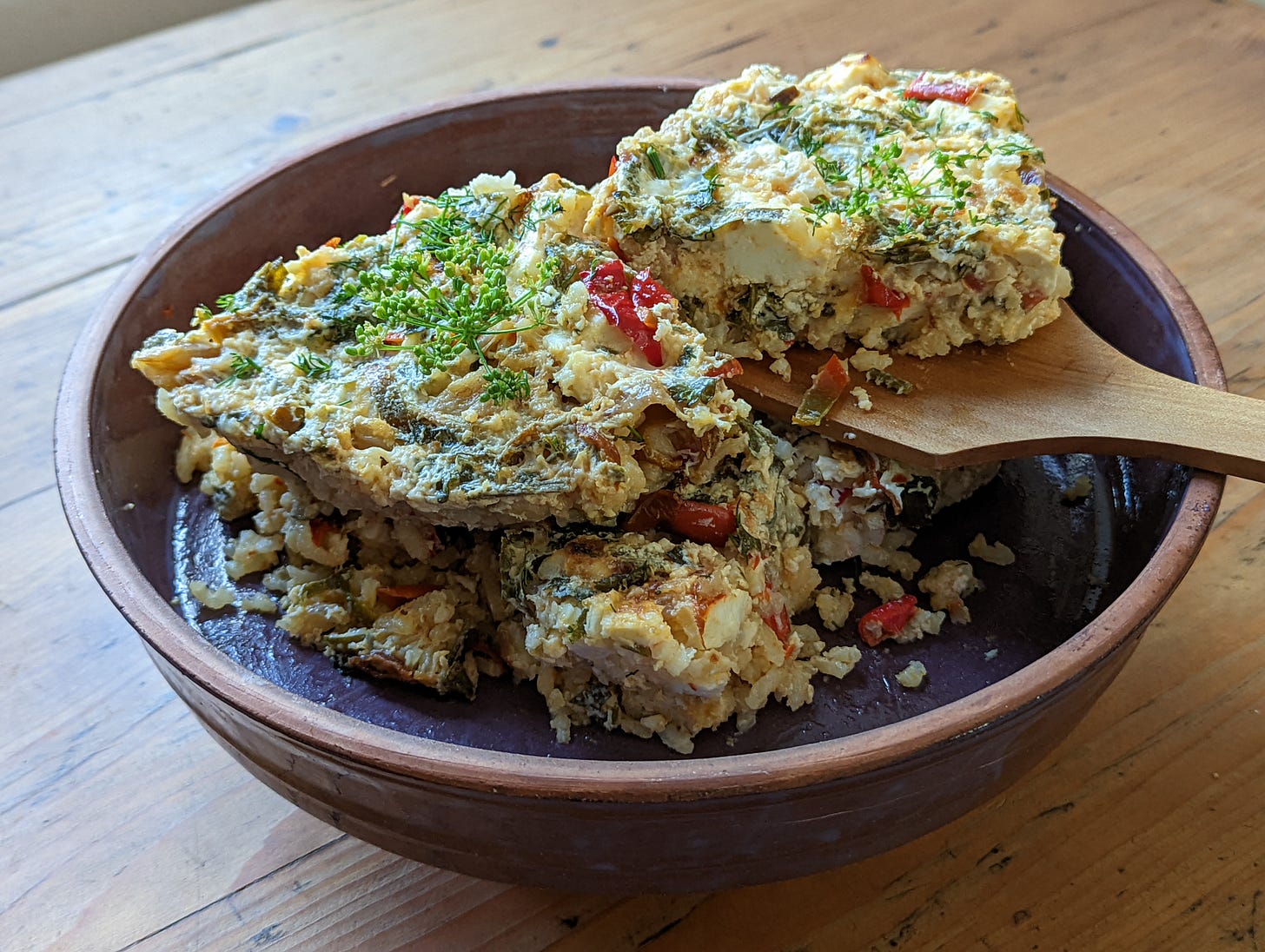Delicious Briani is related but quite different from the Indian Biryani
Oven-baked rice with milk, feta, peppers, and herbs is the frugal, Balkan version: a wonderful and versatile dish.
My late cousin Leonidas, who lived on Kéa long before we decided to move here, got the recipe from one of the first Greek-Albanian immigrants who worked on the island. Completely different from the Greek briami —a medley of roasted summer vegetables— this briani has become part of our family’s permanent repertoire, our favorite rice casserole.
The name briani or briami most likely comes from the Persian biryan. Maria Kaneva in her book The Melting Pot: Balkan Food and Cookery, describes a rice, potato and tomato briani, and writes that there are many variations, which can be traced to the Balkans in the Middle Ages.
“One theory states that[biryani] originated from birinj (Persian: برنج), the Persian word for rice,” we read in Wikipedia. “Another theory states that it was derived from biryan or beriyan (Persian: بریان), which means "to fry" or "to roast". It may alternatively be related to the Persian word bereshtan (Persian: برشتن) which also means "to roast (onions)," as the dish is often prepared by flavoring rice with fried onions and meat, besides mild spices,” cites Wikipedia, mainly tracing the Asian dishes' origins.
“Biryani is the single most-ordered dish on Indian online food delivery services, and has been labelled as the most popular dish overall in India, […] and one of the most popular dishes among the South Asian diaspora, although the dish is often associated with the region's Muslim population in particular. Similar dishes are also prepared in Iran, Iraq, Myanmar, Thailand, and Malaysia,” according to Wikipedia.
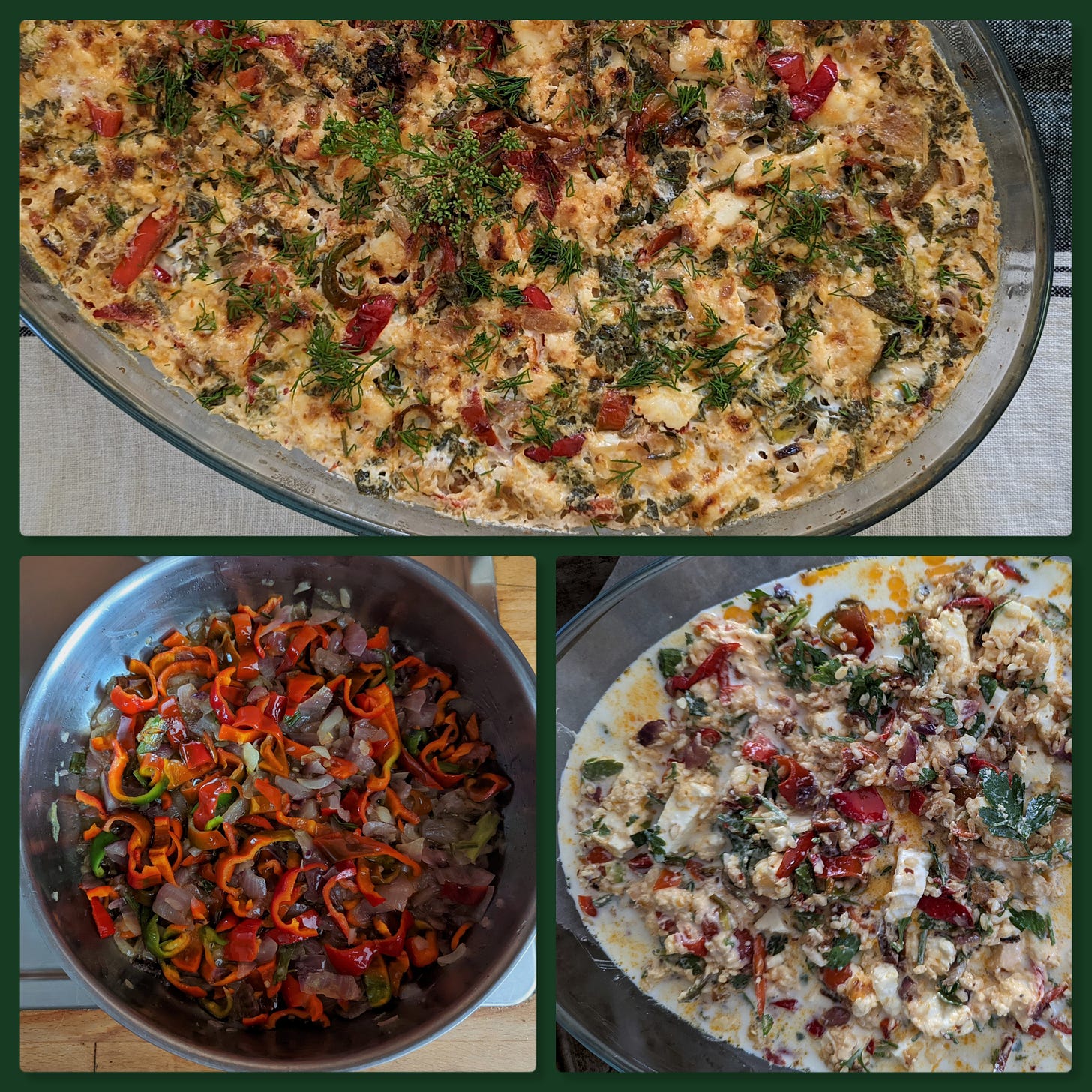
Here I am describing a very different dish, the Albanian briani, which is not spicy but a comforting, frugal dish, which it may, occasionally, have some scraps of meat —lamb usually. It has no tomato, and thus it is very different from the popular, heavily spiced Asian biryani.
My friend Stamatia Stylou cooked for me the diverse Albanian briani dishes. A teacher in a Greek minority southern Albanian village, before moving to Kea, Stamatia is a fabulous cook and baker. Her 70-sheet, home-rolled phyllo baklava is phenomenal! She is the one who taught me how to roll phyllo —although I have yet to manage achieving decent sheets…
Among the many frugal and delicious dishes I learned from her, the simplest herb and scallion baked rice was the briani I chose to include in my book Mediterranean Vegetarian Feats.
As Stamatia explained, this is the paired-down, ‘poor-man’s’ version. People occasionally added chopped lamb’s liver or other innards, while she remembers her grandmother making it with sliced eel, whenever she managed to catch one in the local stream.
The meat versions were scented with chervil and the green leaves of fenugreek, Stamatia told me. Incidentally, fenugreek spice —actually a tiny legume— which is not used in our part of the world, is an important element of Indian garam masala, the spice blend used to flavor many dishes, and biriyani!
The portable oven
In Albania, as well as in Greece in the old days, before electric ovens, briani and a lot of other dishes, including the various pites (phylo-wrapped pies) and breads were baked in gastra, or Sač —sac in Albanian— the ancient ‘portable oven’.
“A large metal or ceramic lid, under which various dishes were baked covered. Over the lid ashes and live coals were placed,” as Wikipedia describes it. “Dishes prepared in a sač are evenly cooked, retain their juiciness, and are praised for their rich flavor.”
Gastra has recently become fashionable again, and some Greek taverns advertise the meat baked under the coals. In Croatia seafood is traditionally baked in the peka, as the portable oven is called.
The completely different Greek Briami
What we call briami in Greece, is yet a very different dish: it has no rice, and is a medley of olive-oil-drenched, oregano-scented oven-roasted summer vegetables. We love it, and often whip it up together with our guests and serve it with feta cheese and crusty homemade bread, usually along with Costas’ charcoal-grilled fish.
Albanian Briani: Baked Rice with Peppers, Milk, Feta and Dill
You can use both red and green peppers to make it visually appealing. This is not a photogenic dish, but, trust me, it is almost as delicious as paella. You can serve it hot, right out of the oven, but we prefer to eat it room temperature. Often we bake it in the morning before going to the beach, and enjoy it for lunch, with a simple summer salad.
Makes 6 servings
1/4 cup olive oil
2 cups chopped onions
Keep reading with a 7-day free trial
Subscribe to Aglaia & Costas' Aegean Island Kitchen to keep reading this post and get 7 days of free access to the full post archives.


